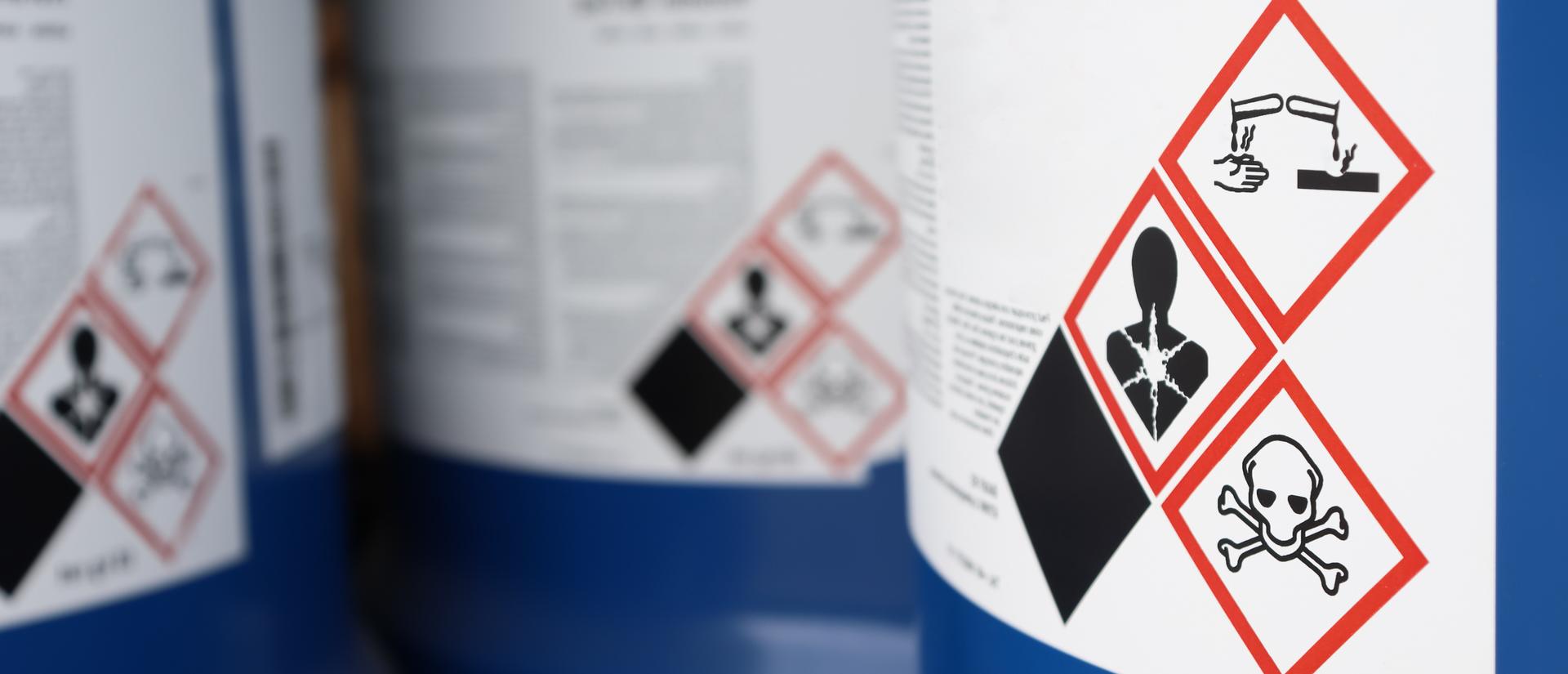Chemicals and Hazardous Materials
Summary
How to manage and work with chemicals and hazardous materials in buildings, labs, operations, and on construction projects.
Who is this for?
All students, faculty, and staff and everyone in Harvard buildings.
Working with or handling chemicals
Always review chemical safety data sheets (SDS) and chemical information before working with or handling chemicals.
- ChemWatch SDS database: Safety information about lab, building trade, and custodial chemicals. Use your HarvardKey to access ChemWatch.
- PubChem lab chemical safety summaries: Lab-focused chemical hazard summaries.
Everyone at Harvard who performs lab work should review lab chemical safety information, including the Harvard Chemical Hygiene Plan (CHP) and chemical safety reference materials that include SDSs.
Use this information to:
- Understand administrative requirements and responsibilities.
- Comply with applicable federal, state, and local regulations.
- Identify chemical hazards.
- Follow guidelines and standard operating procedures (SOP).
- Safely handle and use chemicals.
- Properly store and dispose of chemicals.
Building and operations management must follow hazard communication requirements to manage hazardous chemicals.
- Provide safety information to help staff identify and evaluate hazardous chemicals used in their workplace.
- Ensure all staff complete training on how to read SDSs and to understand chemical hazards.
- Label containers of hazardous chemicals that could pose a physical or health hazard to exposed staff in the workplace.
Hazardous chemical label requirements
Each label must include (as applicable):
- Manufacturer name and address.
- Brief description of the chemical.
- Main ingredients.
- Major hazards, including:
- National Fire Protection Association 704 label for fire hazards.
- Globally Harmonized System pictograms and hazard warnings for potential exposure risks.
- Personal protective equipment (PPE) for handling the chemical.
- Instructions to safely use the chemical.
- First aid information.
- Storage instructions.
- Container disposal instructions.
Chemical and hazardous material safety at Harvard
EHS support
Contact EHS for more information about chemical and hazardous material safety, including:
- Cold and warm rooms.
- Hazard communication and hazardous workplace chemicals.
- Hydrogen gas and oxygen storage.
- Isoflurane exposure control.
- Particularly hazardous or potentially unstable chemicals.
